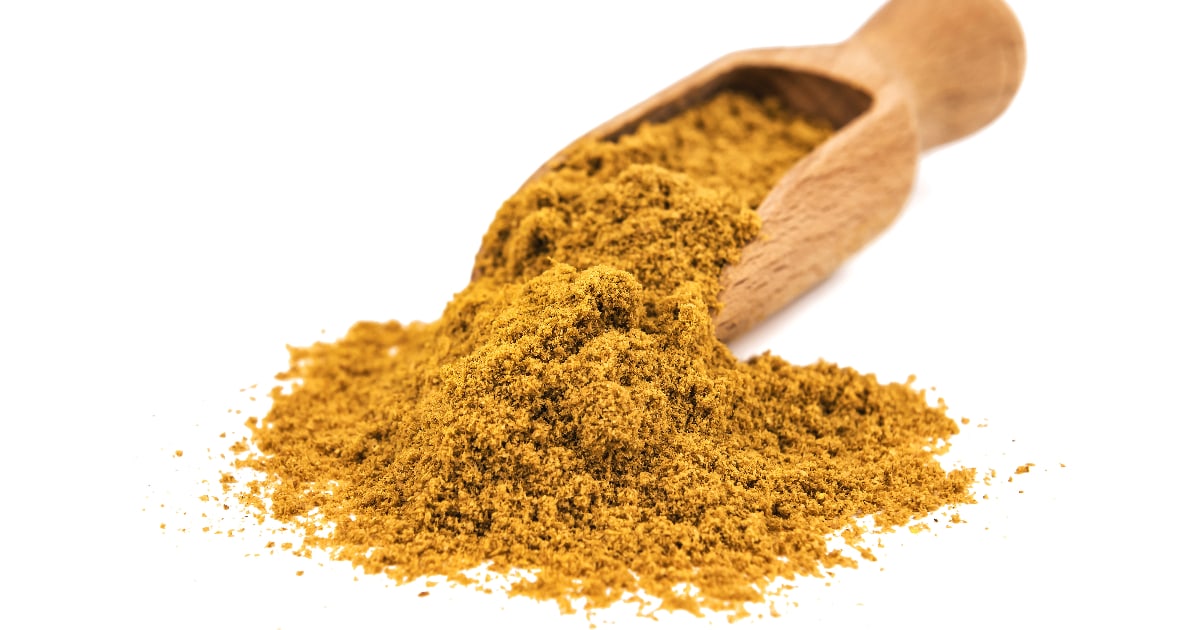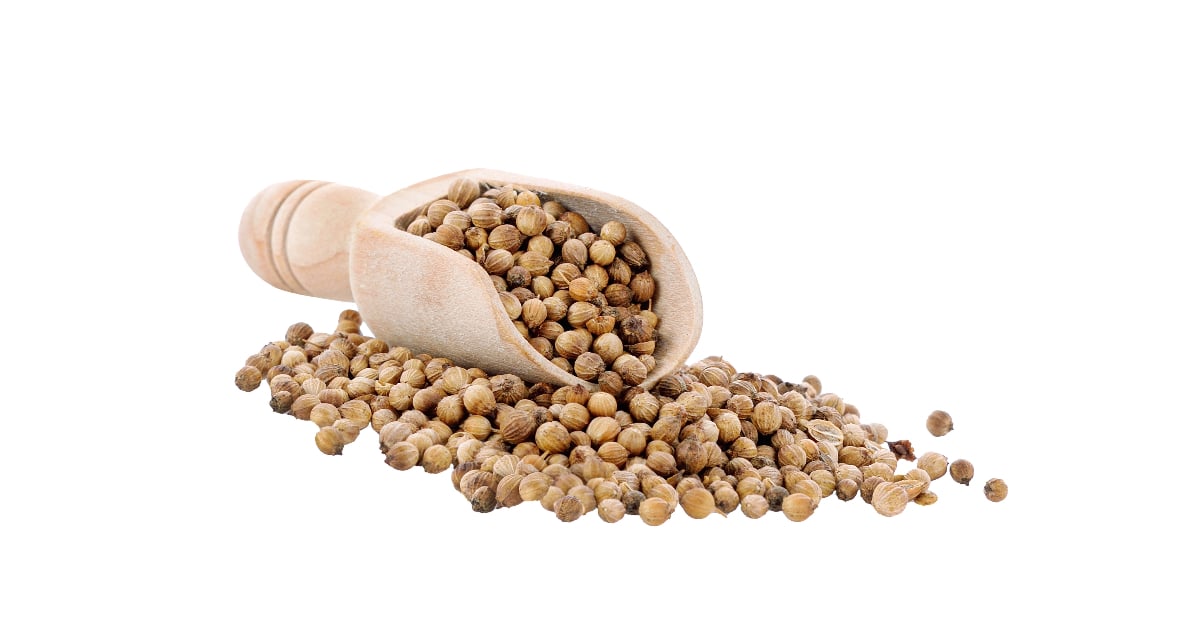Coriander powder is a staple spice in many cuisines around the world. Its warm, earthy citrus flavor adds depth and interest to curries, stir-fries, marinades, and more. But what if you find yourself out of coriander powder when a recipe calls for it? No need to make an emergency grocery store run! There are plenty of suitable coriander powder substitutes you likely already have in your pantry.

First, let's clarify what exactly coriander powder is. Coriander powder is made from the dried seeds of the coriander plant, which is also known as cilantro in some parts of the world. The leaves of the coriander plant are called cilantro or fresh coriander, while the dried seeds are called coriander.
Coriander powder has a distinctive flavor profile that is warm, earthy, and citrusy. It adds depth and complexity to dishes, especially curries and stews. When you run out of this versatile spice, finding a substitute can ensure your recipe still tastes great.
Read on to explore 12 delicious coriander powder substitutes you likely have on hand already. We'll also look at some tips for achieving the best results when substituting, as well as answer some frequently asked questions about coriander powder.
So if you find yourself stuck without this aromatic spice, discover the flavorful alternatives!
12 Common Coriander Powder Substitutes

Here are 12 suitable options that can stand in for coriander powder in a pinch:
1. Ground Coriander Seeds
This one is obvious, but if you have whole coriander seeds, you can simply grind them into a powder. Use an electric coffee grinder, mortar, pestle, or even a Ziploc bag with a rolling pin to crush the seeds into a fine powder.
Key Takeaway: Grinding fresh coriander seeds is the best substitute for store-bought coriander powder.
2. Ground Cumin
Cumin is another spice that is frequently called for in recipes alongside coriander. It has an earthy, nutty warmth that approximates some of the flavor notes in coriander.
Use a 3:4 ratio of cumin to replace coriander powder. Start with 3/4 teaspoon cumin for every 1 teaspoon coriander powder. Adjust to taste, as cumin can be quite strong.
3. Caraway Seeds
Caraway belongs to the same family as coriander and tastes remarkably similar. It has an anise-like flavor with earthy citrus notes.
Use an equal amount of freshly ground caraway seed in place of coriander powder. It makes an excellent stand-in.
4. Fennel Seeds
Like caraway seeds, fennel seeds can mimic some of the flavor aspects of coriander powder. Their anise flavor has a touch of sweetness and earthiness that works well as a substitute.
Use a 1:1 ratio, substituting 1 teaspoon fennel seed for 1 teaspoon coriander powder. Adjust to taste.
5. Curry Powder
Most curry powder blends contain coriander, along with spices like turmeric, cumin, fenugreek, cinnamon, and chili powder. It adds complex flavors of sweetness and heat.
When using curry powder in place of coriander powder, start with half the amount called for and adjust from there so the curry doesn't overpower.
6. Garam Masala
This blend of spices typical in Indian cuisine also frequently contains coriander powder. Garam masala mixes can vary but often contain cumin, cinnamon, cloves, cardamom, black pepper, and more.
As with curry powder, use garam masala sparingly, starting with about half the coriander powder amount.
7. Ground Ginger
While it has a different taste profile, ground ginger can add some of the warm, earthy flavor notes of coriander powder. Its spicy heat pairs well with ingredients like chicken, fish, and vegetables.
Use a 1:1 ratio, substituting 1 teaspoon of ginger for 1 teaspoon of coriander powder.
8. Turmeric
Another common Indian spice, turmeric has an earthy flavor that can approximate some aspects of coriander powder. Since it is quite potent, use a ratio of 1 teaspoon of turmeric for every 2 teaspoons of coriander powder called for.
9. Dried Parsley
As a sibling in the parsley family, dried parsley flakes can mimic some of the earthy qualities of coriander. Its flavor is a bit more grassy and herbaceous.
Substitute dried parsley using a 1:1 ratio for coriander powder.
10. Dill
The subtle anise flavor of dill weed makes it an interesting substitute for coriander powder. It won't taste the same, but can add a new complexity and flavor twist.
Use a ratio of 1 teaspoon of dried dill weed for 2 teaspoons of coriander powder. Adjust amounts to taste.
11. Cumin Seed + Fennel Seed
For a more layered flavor profile, try combining spices like cumin and fennel seeds. This will approximate some of the multifaceted aspects of coriander.
Use a 2:1 ratio, substituting 2 teaspoons of a cumin/fennel blend for 1 teaspoon coriander powder. Adjust ratios and combinations of spices to your liking.
12. Curry Powder + Garam Masala
As mentioned above, blending curry powder and garam masala can help recreate some of the flavor complexity of coriander powder.
Use a ratio of 1/2 teaspoon curry powder + 1/2 teaspoon garam masala for every 1 teaspoon coriander powder called for.
Key Takeaway: Blending spices like cumin, fennel, curry, and garam masala can mimic the layered flavors of coriander powder.
Tips for Using Coriander Powder Substitutes
When using a substitute for coriander powder, keep these tips in mind:
- Start with less spice than the amount of coriander powder called for. You can always add more if needed.
- Adjust other spices in the recipe as needed. For example, if using curry powder, you may not need extra turmeric.
- Add spices like lemon juice or zest to brighten flavors in the absence of coriander's citrus notes.
- Toasting whole spice substitutes before grinding them boosts flavors. Dry pan-fry for 1-2 minutes until fragrant.
- Use fresh spices where possible for the most robust flavor. Coriander powder loses potency over time.
- Combine spices like cumin, fennel, and ginger to create a more complex flavor profile.
- Trust your taste buds! Sample dishes as you cook and adjust seasonings until you achieve the desired flavor.
FAQ
What does coriander powder taste like?
Coriander powder has a warm, earthy citrus flavor with subtle sweet undertones. It is more mellow than the fresh cilantro herb.
Can I substitute ground coriander for coriander seeds?
Yes, use a 3:4 ratio. For every 1 teaspoon coriander seeds, use 3/4 teaspoon ground coriander powder. Start there and adjust the amounts to your taste.
What's the difference between coriander and cilantro?
Coriander refers to the dried seed or powder made from the seeds. Cilantro is the fresh leafy greens from the same coriander plant.
Is coriander powder the same as garam masala?
No, garam masala is a spice blend that typically contains coriander powder plus other spices like cumin, cinnamon, cloves, and black pepper.
Can I use curry powder instead of coriander?
Yes, you can substitute curry powder for coriander powder. Since curry powder includes a mix of spices, use about half the amount of coriander powder called for and adjust from there.
Conclusion
While coriander powder has its own unique citrusy, earthy flavor, there are many common spices and blends that can make a suitable replacement. From aromatic seeds like cumin and fennel to curry powder and garam masala, you likely have some coriander powder substitutes in your kitchen already.
When using replacements, start with smaller amounts and allow the flavors to develop as you cook. Blending spices can help recreate the layered notes in coriander powder. Adjust seasonings to taste, and brighten flavors with acidic ingredients if needed.
With so many flavorful and convenient options to choose from, you can continue cooking your favorite coriander-based recipes, even when you've run out of this versatile spice.

